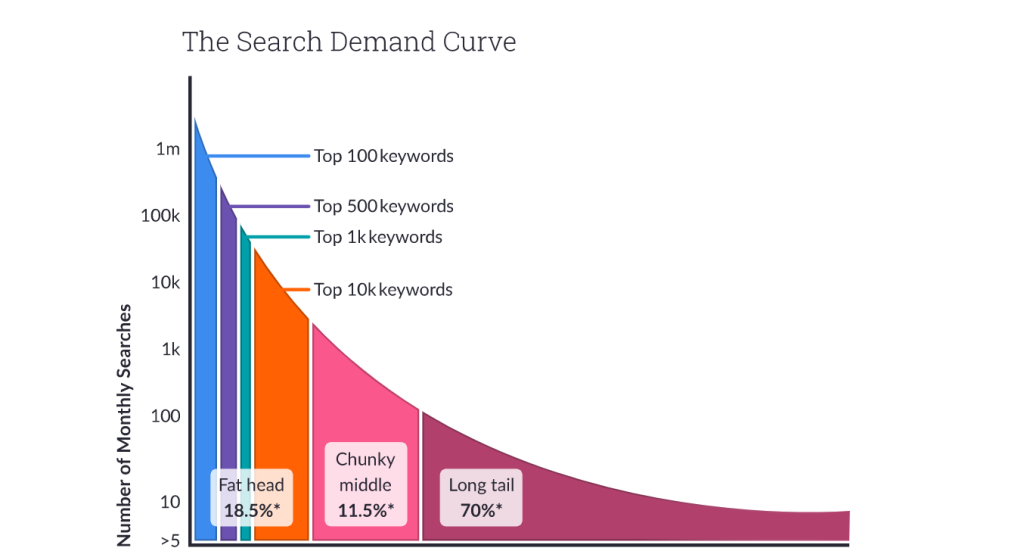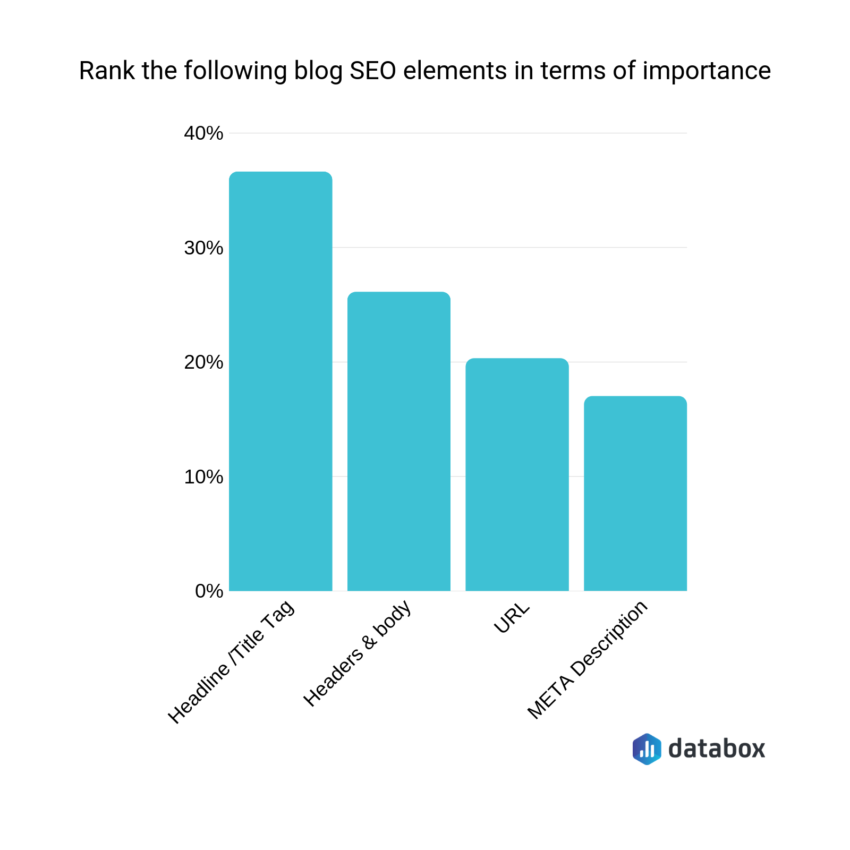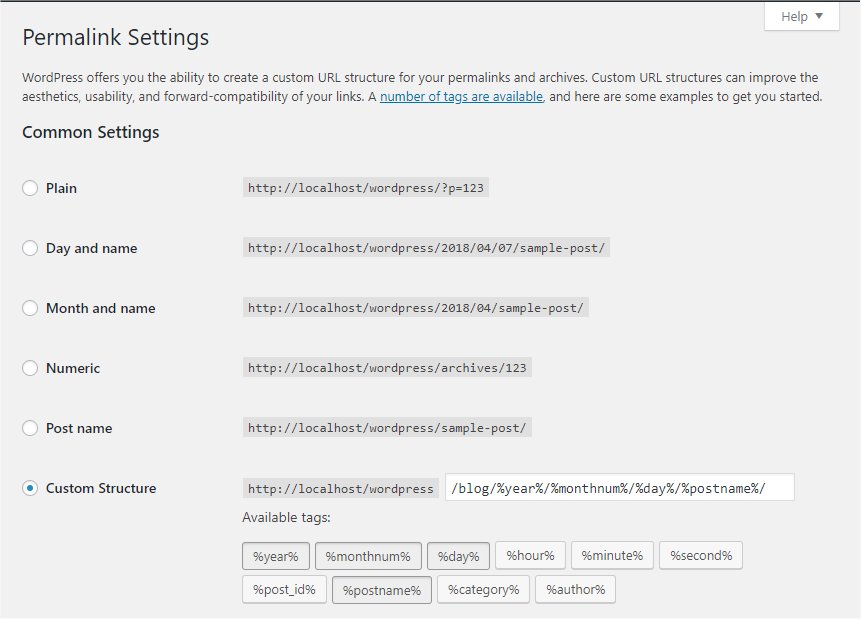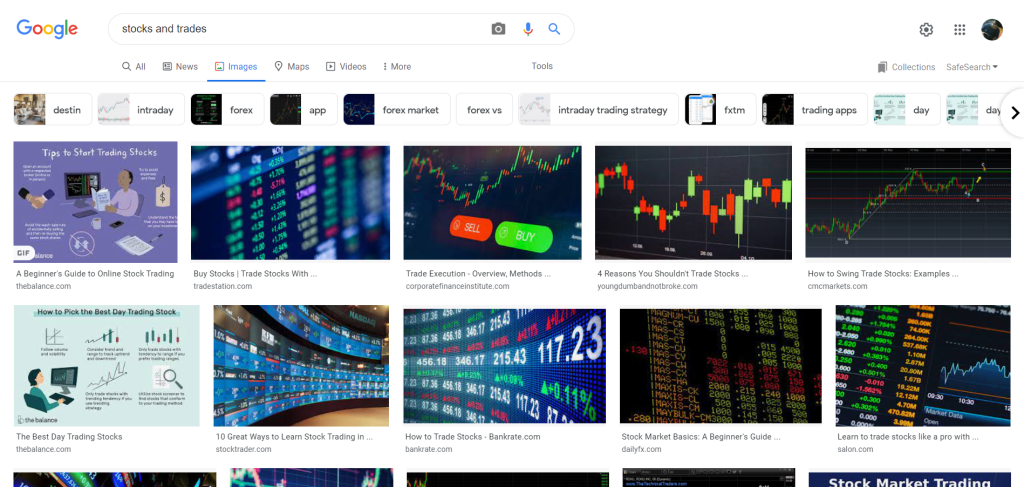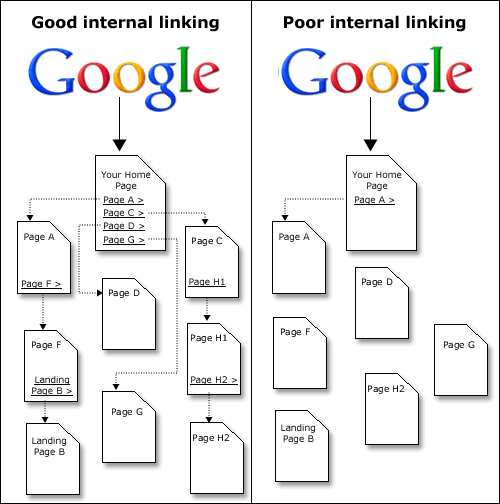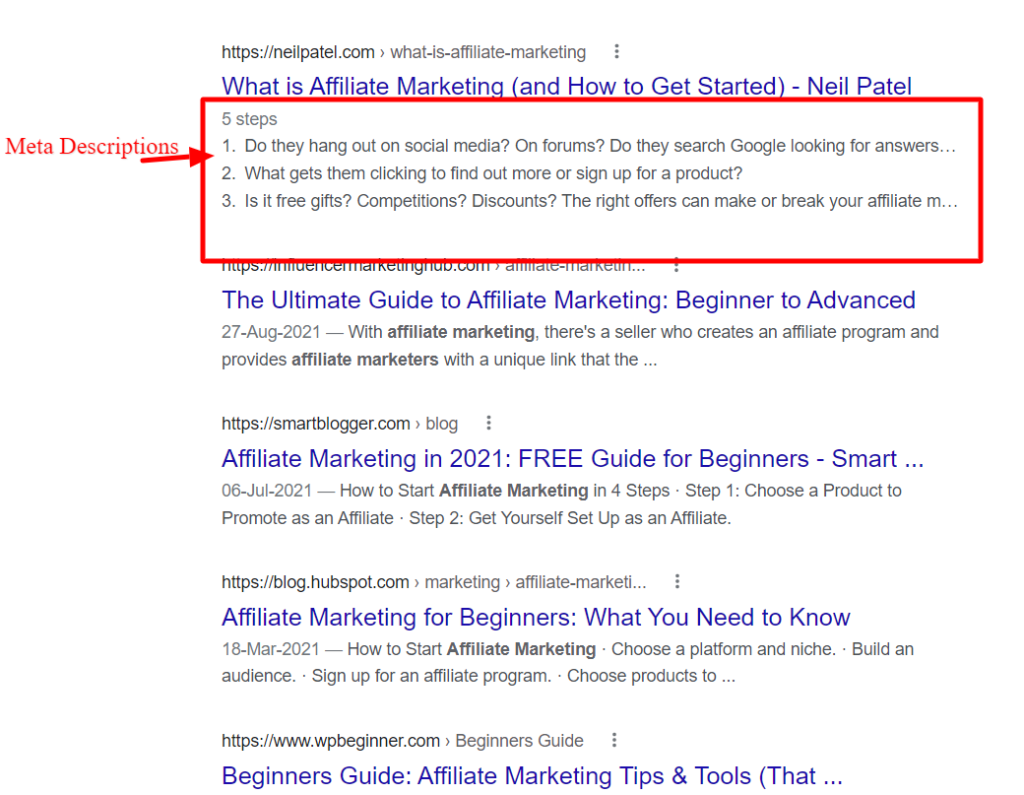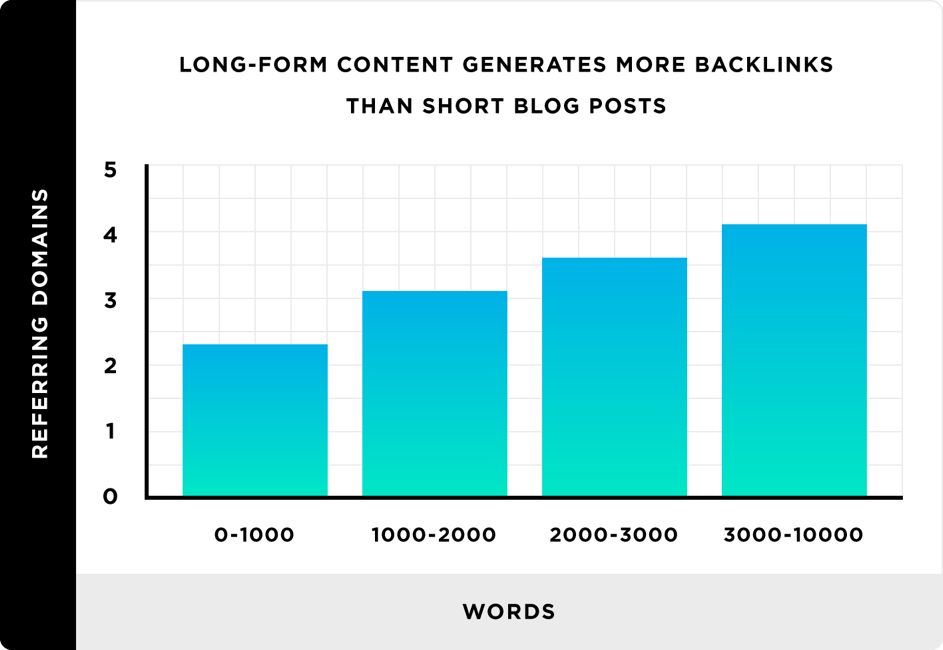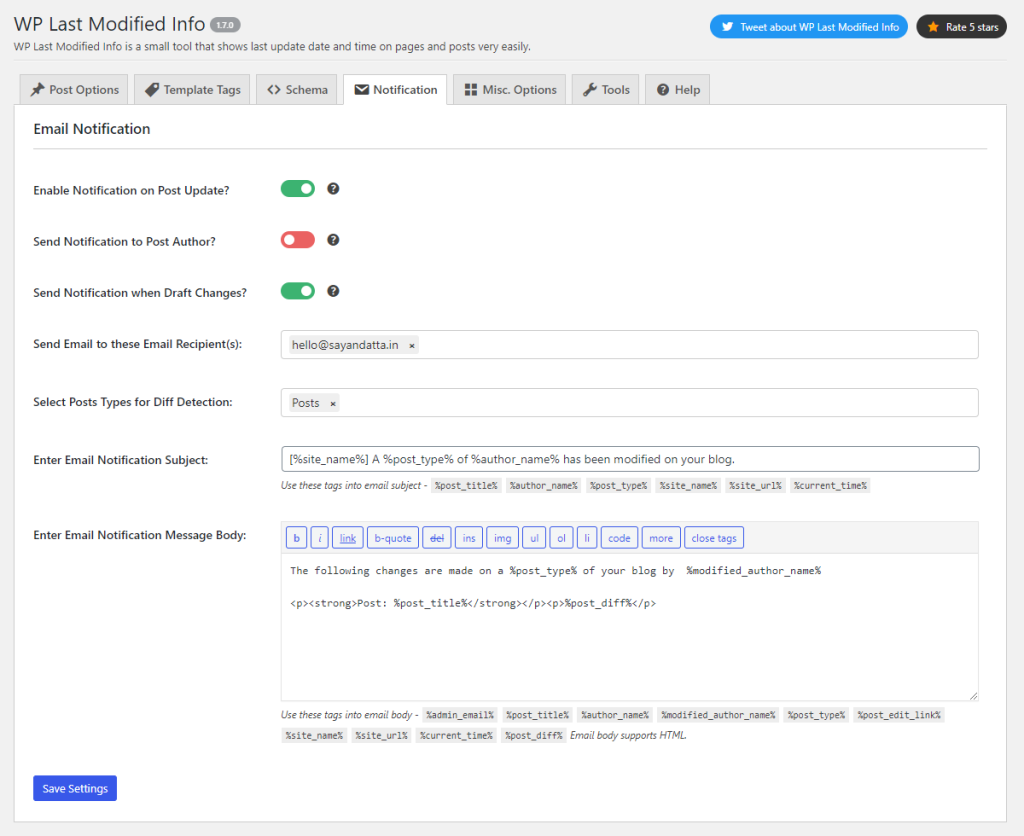Looking for a detailed guide on How to Write an SEO-Friendly Blog Post? Here is the answer.
Writing blog posts that rank well in search engines requires thoughtful preparation. It starts with keyword research.
Followed by engaging, helpful content that serves your readers.
Our goal is to create the very best resource on any given topic.
But your blog post must also be SEO-friendly.
By performing some basic on-page optimization, you’re much more likely to rank for your desired keywords.
Many factors contribute to a well-optimized article, but the most important one is quality.
Our goal is to create the very best resource on any given topic.
Formatted with proper headings, paragraphs, images, and plenty of white space.
User experience, relevancy, and search intent are becoming increasingly important for Google.
By creating the best possible experience for your readers, you also create some of the best ranking signals for Google as well.
In this step-by-step guide, I’ve outlined 11 simple steps for crafting a perfectly optimized, SEO-friendly blog post.
How to Write SEO-Friendly Blog Posts?
1. Keyword Research
Before you start writing, you first need to do some keyword research.
This is key to creating content that drives free, organic search traffic from Google, Bing, and Yahoo.
- What keywords are people currently typing into Google?
- What questions are people asking?
- What problems are they trying to solve?
- Find out what your audience is ALREADY searching for.
When I first got started, I made the mistake of writing LOTS of content without doing keyword research. I simply wrote what I thought my readers would be interested in.
Because of that – I missed out on a lot of free search engine traffic.
Now, don’t get me wrong. Your audience always comes first. You’re writing for your audience first and foremost.
But… do the research first to find out what your audience wants. What are they ALREADY searching for online?
Then, optimize your blog posts for those specific keywords.
You can use free tools like Google Keyword Planner, SEMRush, and KeywordFinder.io to find out how many times per month people are searching for specific keywords and phrases.
Another excellent free keyword tool is Ubersuggest. This tool allows you to uncover 100 potential long-tail keywords.
Identify your competitor’s top pages and the exact keywords they rank for.
Find the approximate keyword difficulty of any keyword based on the domain authority and backlinks held by the top 10 results.
Ubersuggest is probably my favourite free keyword tool. The owner (Neil Patel) is constantly improving it and adding new features.
In fact, there’s a lot of cool stuff you can do inside Ubersuggest that was previously only available in paid tools.
So, a big thanks to Neil for making our job as bloggers a whole lot easier.
In fact, even Google themselves will tell you what people are searching for using the autosuggest tool.
Simply enter a topic into the Google search bar and see what else comes up!
With just a few tools, you’ll have an endless number of content ideas.
If you are an amateur blogger, then you must read this guide first and then come to this one.
2. Go After Long-Tail Keywords
It’s much harder to rank for one or two-word phrases in Google. These phrases are generally very competitive.
It’s much easier to go after a phrase that’s 3-words 4-words or even longer.
When you’re just getting started, it’s much easier to rank for low-competition, long-tail keywords.
As your website gains more domain authority, you can start going after more competitive terms.
In fact, half of all searches are for terms with 4+ words. And 70% of all search traffic is made up of long-tail keywords.
So, while everyone else is fighting over the most competitive keywords, you can swoop in and grab super-targeted, long-tail search traffic.
Source: Moz.com
Long-tail keywords are a bit like the Wild-Wild West, where there are still plenty of golden gems and hidden opportunities.
These less competitive terms are much easier to rank for. But you still need to create the very best resource on that particular topic.
The other benefit of long-tail keywords is that they often have a much clearer search intent.
For example, if someone types into Google: make money online
First – that’s going to be incredibly competitive. But it’s also very broad.
We don’t know if the searcher wants to make money with affiliate marketing, freelancing, blogging, surveys, as a virtual assistant, etc…
Which could lead to a lot of untargeted traffic coming to your website. Our goal is to scoop up targeted traffic that converts.
So instead of going after the phrase “make money online”, we niche it down.
Compare that to someone who searches for how to make money with affiliate marketing.
This phrase gets about 1,300 searches per month, and it’s much more specific, making it much easier to identify what the searcher is truly looking for.
You could also explore similar (lateral) long-tail phrases:
- How does affiliate marketing work? (880 searches per month)
- Affiliate marketing for beginners (3,600 searches per month)
- Best affiliate programs for beginners (720)
- Top-paying affiliate programs (1,600 searches per month)
- Notice how, as we start going more long-tail, the search intent becomes much clearer.
When you know the searcher’s intent, you can create much more relevant (and therefore more valuable) content for your reader.
Google rewards those who provide relevant, valuable content that fully answers the reader’s question.
3. Put Your Main Keyword in the Title
This is one of the most important places to include your main focus keyword, the keyword phrase that you want to rank for in Google.
Your title will tell your readers and the search engines what your page is all about.
It’s also one of the first things people see on the search results page, so you want to create an enticing title that encourages people to click through to your result.
Source: ImpactPlus
The key to a great title is a combination of both relevancy and good copywriting.
You can use numbers and benefit-driven headlines to catch people’s attention and increase your click-through rates.
Just be sure to include your main keyword phrase at the beginning of the title.
Quick Note: Google is also looking at the CTR of your search result. Because a higher click-through rate most likely means that your website is more relevant if people are clicking on it more than your competitors.
A higher click-through rate can also increase your rankings, so the title is very important—both for your readers and for your rankings.
4. Include Your Keyword in the URL
Inside WordPress, you can customize the URL for each blog post. Also called the permalink.
This helps your readers and search engines immediately understand your content. Always customize your URL before publishing.
But do NOT include any dates in the URL.
This would make your content less relevant after the date has passed and could also decrease your click-through rates, as searchers are often looking for the most recent, relevant, and up-to-date information.
I find short permalinks do best. For example, if the title of your article is “10 Steps to the Ultimate SEO-Friendly Blog Post”.
The URL slug would be yourwebsite.com/seo-friendly-blog-post
Keep it short and sweet while also including the main keyword phrase you want to rank for.
5. Optimize Your Headings
There are three main headline tags. H1, H2, and H3. These headline tags help you to structure your blog post.
They also help search engines figure out what your page is all about.
Your blog post should contain just one H1 tag. This is generally the same as your blog post title.
Most WordPress themes are designed so that the title of the blog post is wrapped in an H1 tag.
The h2 tags are used for all of the individual subtopics that you’ll cover in the blog post.
And h3 tags are often used for a list of sub-items underneath the h2 tag.
Here’s an example of how we organize our blog posts. In fact, it’s the same blog post you’re reading now.
The title is wrapped in an H1 tag, and all of the main blog post topics are H2 tags.
You don’t always have to use h3 tags on every page.
Sometimes, all you need is H1 for the title at the top and h2 for your sub-topics underneath.
6. Optimize Your Images
Did you know? You can actually optimize your images to rank in Google’s image search.
We often forget that Google has a variety of content categories that you can search for.
In addition to their web results, you can also search for images, videos, and news.
Their image search, in particular, gets a tremendous amount of search traffic all by itself.
You can benefit from that by optimizing your images. This also helps increase the relevancy of your blog post.
Here are a few things you can do to optimize your images.
- Name your images with relevant keywords. (Ex. Blog-Post-SEO.jpg)
- Add an alt attribute.
- Decrease the size of your images. This will help your pages load faster, which is another important Google ranking factor. Google wants to create the best possible experience for it’s users. So they reward websites that load quickly.
- Make sure that your pages load quickly. Optimizing your images using a free tool like Kraken.io or a WordPress plugin like Shortpixel can dramatically speed up your website.
7. Link to Previous Posts
Links are still one of the most important ranking factors that Google uses in its algorithm.
But it’s not just external links. Internal links also help pass “link juice” from one page to another within your website.
Source: Reliablesoft.net
Wikipedia is an excellent example of a website that uses a strong internal link structure to help them win thousands of top page rankings in Google.
You must link to related blog posts that will help your readers explore this topic further.
This helps pass link juice to that page and also establishes relevancy for the topic you’re covering.
When possible, use relevant anchor text to link to these older posts.
But it’s important to vary your anchor text, using a variety of different long-tail and related search phrases.
This internal link structure not only serves your readers but can also improve your search engine rankings.
8. Increase CTR with Meta Descriptions
Meta descriptions have no impact on your rankings. However, they are seen by searchers.
Every time you search on Google, you will see a meta description for each result.
The more relevant and engaging your description, the more likely someone is to click on your result over someone else’s.
For this reason, it’s important to include your main keyword (and possibly some long-tail variations) in the meta description.
This lets readers know your blog post is relevant to their search query, and they’re more likely to click it.
A higher click-through rate often equates to higher rankings because it’s a signal to Google that your website is more relevant for that specific keyword phrase.
But, of course, there are many different ranking signals. Over 200, in fact.
Another benefit of including your main keyword phrase in the meta description is that it’s often bolded in the search engine results.
Make your result stand out.
But keep in mind that Google does not always use the meta description you have provided. Normally, they do.
But other times, they may pull from content on your page that they feel is more relevant.
Either way – creating an engaging, relevant meta description is important for optimizing your blog posts.
9. How Long Should My Blog Post Be?
Studies show that blog posts with 2,000 words or more are much more likely to rank on the front page of Google.
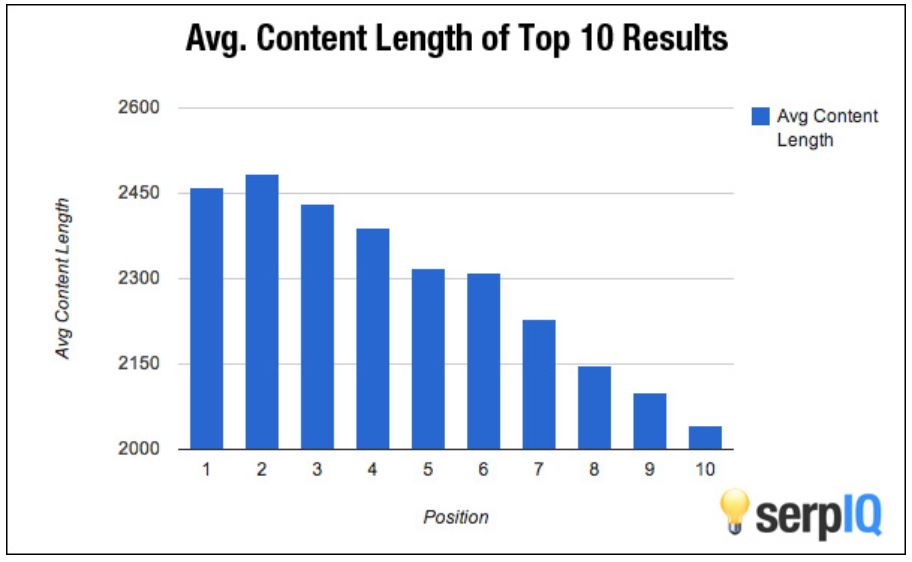
This alone is reason enough to start creating longer blog posts.
But there are other benefits as well.
Longer posts generally provide more value to the reader. It’s hard to cover a topic in just 500 words.
But by writing a guide of 2,000 words or more, you’re able to create a comprehensive resource that answers all their questions.
In addition, research has shown that long-form content is more likely to generate quality backlinks, which is still incredibly important for ranking on Google. People are much more likely to link to long, comprehensive posts than a thin, 500-word blog post.
This is one of the main reasons that long-form content performs better on Google.
In fact, Hubspot did a study on how content length affects backlinks. As you can see, there’s a strong correlation between the word count and the average number of linking domains.
Source: SEJ
Long-form content also gets more social media shares.
As long as it’s insightful, well-written, easy to read, and contains plenty of visual images to help illustrate the content.
No one likes to read long “walls” of text without white space or images. So make sure your content is not just easy to read but also easy on the eyes.
If you want to ensure that you’re able to beat your competitors in the search engines, make your content more valuable, more engaging, and more comprehensive than every other website in the top 10 results.
Remember, more often than not – the best content wins. So, your goal is to make your blog post the BEST resource on your particular topic/keyword phrase.
So now let’s answer the more important question: “How long should your blog post be to rank on the front page of Google?“
While there’s no perfect answer, the best thing to do is study your competitors.
This will give you a good idea of how much content you need to bring to the table in order to compete.
Open up Google and type in your keyword phrase. Then, find the word count for each blog post that ranks in the top 10.
Once you find the total of ALL 10 blog posts, divide it by 10 to find the average length.
Your blog post needs to be at least this long in order to compete on the front page.
Remember – you can always go back and improve your posts later.
But the first thing you want to do is publish as much content as you can. Preferably, it should be at least 1,500 – 2,000 words to start with.
This can vary from market to market, but most markets these days are going to see the best results from 2,000+ word blog posts.
Remember, it often takes many months to get a new page ranking on the first page of Google.
So, the sooner you can get it published, the sooner you’ll start seeing rankings.
10. Link to Authority Websites in Your Industry
External links provide search engines with important clues on the topic relevance of a specific page.
By linking to helpful websites with high authority, you’re creating a better experience for the user.
It shows that you’ve done a thorough research and can boost the reputation of your content as well.
Many SEOs believe that linking to authority sites creates additional trust signals for Google.
Studies now show strong evidence that this could be the case.
Plus, by linking to other websites, they’re much more likely to take notice of you and quite possibly return the favour.
So, it’s a win-win for the reader, SEO, and the overall user experience.
11. Update Old Blog Posts
Gone are the days when you could publish a new blog post, rank in the search engines, and then never touch that blog post again.
Nice in theory. But these days, the “freshness” factor is becoming more and more important.
Over time, blog posts get old and outdated.
It’s important to back and update your articles so that they stay relevant and up-to-date with the latest information.
In fact, it’s often much more advantageous to update old content rather than create a brand-new blog post.
By updating old content, you can often see a boost in your ranking much faster than you would with new content.
Because new pages often require many months to get to the front page of Google.
Here are just a few ways you can update and improve your old content:
- Update / Add new information
- Update / Add new images
- Reshare on social media
- Fix any broken links
- Add an infographic
- Add tweetable links
- Create a new Pinterest Pin
- Add relevant internal/external links
- Add a video to your post that goes into more detail.
- Weave in new long-tail phrases that are showing up in the Google Search Console.
- Find additional long-tail keywords where your page is showing up in the Google search console, but not yet ranked on page one. Go back and update your old content for these additional long-tail phrases. This adds value to your posts and brings in additional traffic.
If you’re wondering which pieces of content you should update, log in to Google Analytics and look for old posts that have started to fall in the rankings over the past few months (or years).
Oftentimes, you can revitalize these blog posts simply by updating them with new information.
Go back and see who’s ranking in the top 10. Make sure that you’re covering all of the most important topics that your competitors are covering.
Whether it’s an old post (or a new post), we’re always looking to create the most valuable resource on the Internet.
That may mean adding additional images, infographics, statistics, graphs, tables, etc…
Go back and see which article you’re linking to.
Are those still the best resources for that particular topic? Are there any broken or outdated links?
You can use a WordPress plugin called WP Last Modified Info to show when your posts were most recently updated.
This plugin will show the date when your post was updated most recently.
It also adds the proper schema markup that notifies Google as to when your content was most recently updated.
Updating older content is one of the easiest ways (low-hanging fruit) to increase your search engine traffic.
More Helpful Posts:
- The Most Important SEO Checklist (Detailed Guide)
- Simple Ways To Improve Your SEO
- Powerful SEO Tips For Writing Better Blog Posts
- Beginning Blogging Mistakes You Can Fix
Conclusion: How to Write SEO-Friendly Blog Post In 2024?
It can take many months for your new blog posts to get ranked for your desired keywords.
So, it’s important to start creating and publishing as much high-quality content as you can.
Start a 30-day challenge and write 2,000 words per day. By the end of those 30 days, you’ll have 60,000 words written on your blog.
This can produce a significant amount of free search engine traffic when you do your keyword research properly.
But the key is to start now. Every day that you don’t write is another missed opportunity to grow your blog.
Now more than ever, quality content is king.
Good, long-form content leads to more backlinks, social media shares, retweets, and return visitors to your website.
The Google algorithm will continue to change, but the #1 thing you can do to create SEO-friendly blog posts is to write the very best resource you can simply. Good content never goes out of style.


